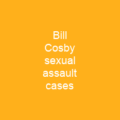Understanding Sexual Assault: A Deep Dive into Its Forms and Impacts
Sexual assault is more than just a single act; it’s a complex web of unwanted sexual contact, coercion, and force. Imagine if someone forced their way into your personal space without your permission—how would that feel? This is the reality for millions around the world who experience sexual assault. It can take many forms, from child sexual abuse to domestic violence, each leaving a lasting impact on its victims.
The Many Faces of Sexual Assault
Let’s break it down further:
- Child Sexual Abuse: This is when adults or older adolescents use children for their own sexual gratification. It’s a form of abuse that can have severe and long-lasting effects on the child.
- Domestic Violence: Often, domestic violence includes sexual elements where one partner uses force to control another in an intimate setting.
- Elderly Sexual Assault: This is a lesser-known form of abuse but just as serious. It involves people 65 or older being subjected to unwanted sexual contact by someone they know, such as a caretaker or family member.
The Impact on Victims
The effects of sexual assault can be devastating and long-lasting. Victims may experience depression, PTSD, anxiety, and an increased risk of re-victimization. These are not just words; they represent the real-life struggles faced by survivors. For instance, did you know that approximately 15-25% of women and 5-15% of men were sexually abused as children? The statistics are alarming, but it’s crucial to understand these numbers to grasp the scale of this issue.
Types of Sexual Assault
Rape: This is a form of sexual assault that involves penetration without consent. It can be physical or psychological, and its impact on survivors can be profound. Imagine being forced into something you didn’t want—how would that change your life?
The Broader Implications
Sexual assault doesn’t just affect the individual; it has broader economic impacts as well. Studies show that sexual assault can result in $5,100 in tangible losses and $81,400 in lost quality of life per incident. This is a staggering cost to society, highlighting why addressing this issue is not just about helping individuals but also about the collective good.
Prevention and Support
To combat sexual assault, various prevention programs have been developed. These include:
- The One in Four Program: This program focuses on raising awareness and changing behavior through secondary school, college, workplace, and public education.
- MVP: Mentors in Violence Prevention: Encourages men to be active bystanders when they notice abuse. It’s about standing up for what is right and preventing harm before it happens.
The Role of Legislation
Legislation plays a crucial role in addressing sexual assault. In the United States, Title VII makes it unlawful for employers to discriminate based on race, color, religion, sex, or national origin. However, as seen in U.S. v. Morrison, Congress’s authority can be limited when it comes to enacting laws that don’t have a direct impact on commerce.
The Global Perspective
Sexual assault is not just an American issue; it’s a global problem. In Australia, for example, 80,000 children are sexually abused each year. The term ‘sexual assault’ varies by jurisdiction, with different definitions and penalties. For instance, in Queensland, rape can result in life imprisonment under s 349 of the Criminal Code Act 1899.
Conclusion
Sexual assault is a serious issue that affects individuals, communities, and societies as a whole. It’s not just about the physical act; it’s about the emotional, psychological, and economic toll it takes on its victims. By understanding the different forms of sexual assault, supporting survivors, and working towards prevention, we can make significant strides in reducing this pervasive problem.

You want to know more about Sexual assault?
This page is based on the article Sexual assault published in Wikipedia (retrieved on January 16, 2025) and was automatically summarized using artificial intelligence.





